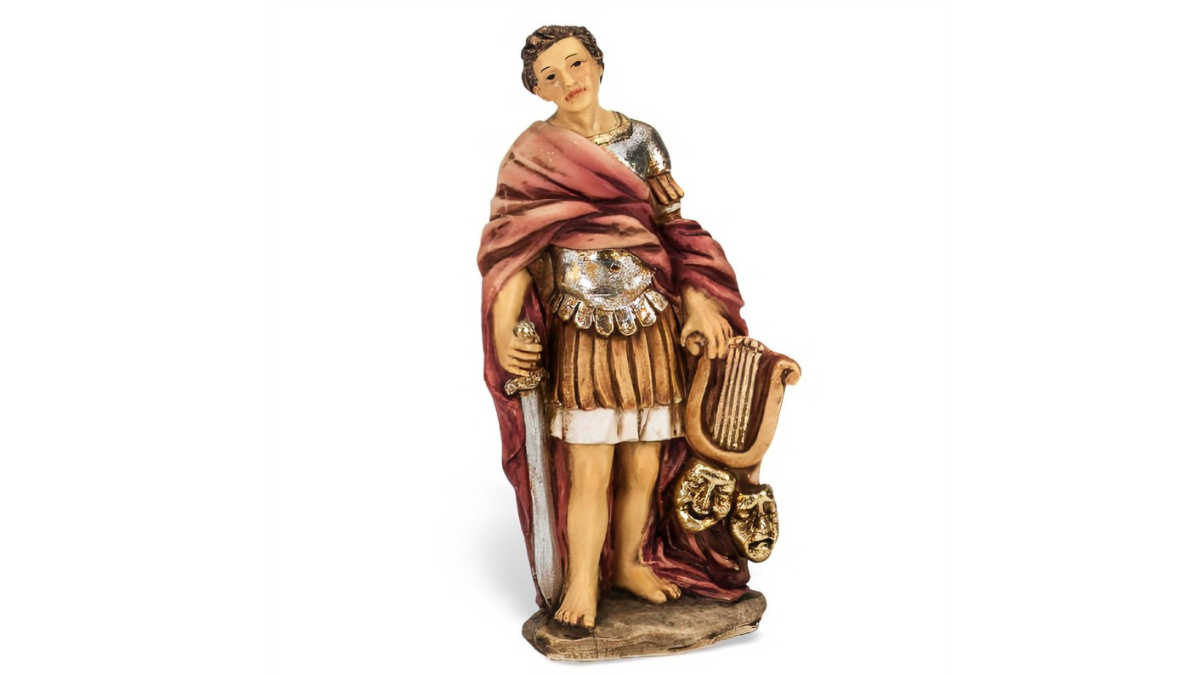
 Add to favorites
Add to favoritesSt. Genesius
| Feast day | September 25 |
| Patron | of Cork, Diocese of Cork |
| Birth | 550 |
| Death | 620 |
St. Genesius of Rome is venerated as the patron saint of actors, comedians, clowns, dancers, and musicians. His feast day is celebrated on August 25th. The details of his life and martyrdom are primarily drawn from hagiographical traditions, which recount a dramatic conversion story that has resonated with performers and artists throughout the centuries.
Life and Conversion
According to legend, Genesius was a comedian and actor in Rome during the reign of Emperor Diocletian (284-305 AD). He led a troupe of actors who were commissioned to perform a play that mocked Christian sacraments, particularly baptism. During the performance, Genesius, playing the role of a catechumen (a person preparing for baptism), was struck by a profound experience of faith.
As he went through the mock baptism on stage, he reportedly received a vision of angels and felt the presence of God. This experience was so powerful that he declared his belief in Christianity to the audience, renouncing his former life and mockery of the faith. The emperor, present at the performance, was initially amused but soon became enraged when Genesius refused to renounce his newfound faith. Despite being tortured, Genesius remained steadfast in his Christian beliefs and was ultimately martyred for his faith.
Veneration
St. Genesius is particularly celebrated by actors and those in the performing arts, who see in his story a profound testament to the transformative power of faith. His courage to profess his beliefs in the face of persecution serves as an inspiration to many. Churches and organizations dedicated to the performing arts often invoke his intercession, seeking his patronage for courage, creativity, and integrity in their work.
Legacy
St. Genesius’s story, while rooted in tradition rather than extensive historical documentation, has left a lasting legacy. His tale underscores themes of conversion, redemption, and the power of personal witness. Artists and performers continue to look to St. Genesius as a symbol of spiritual awakening and artistic dedication, finding in his story a profound connection between their craft and their faith.
Views: 0


